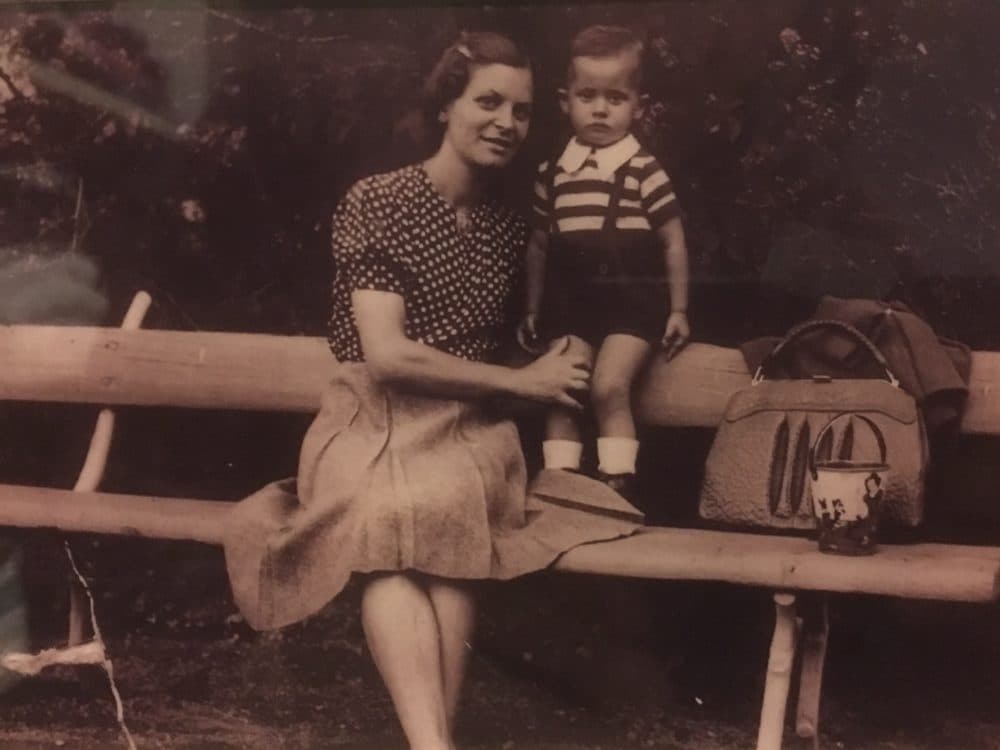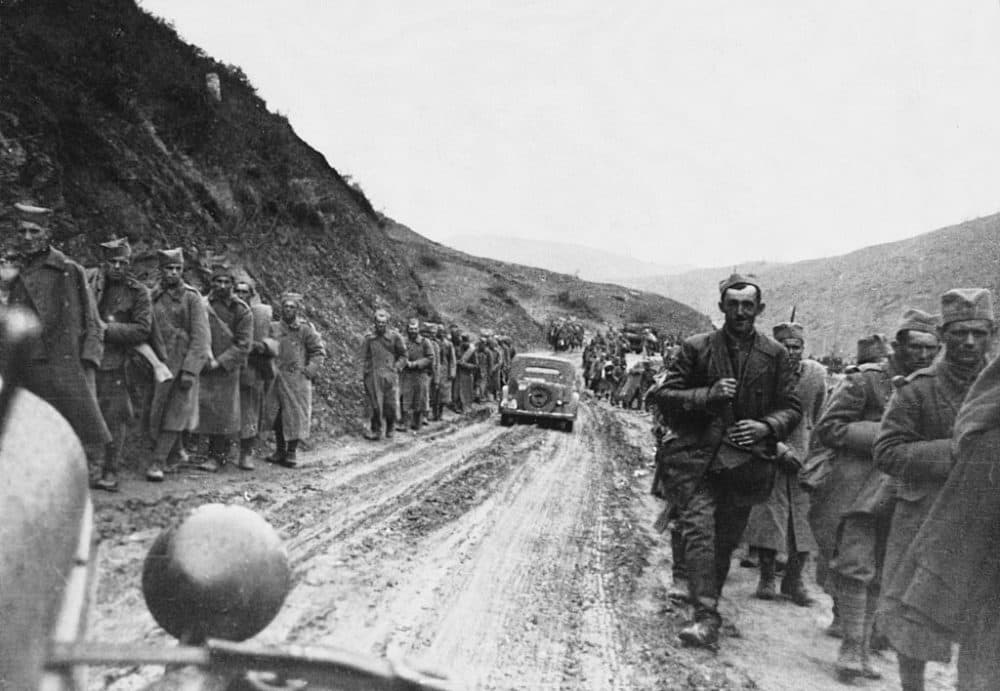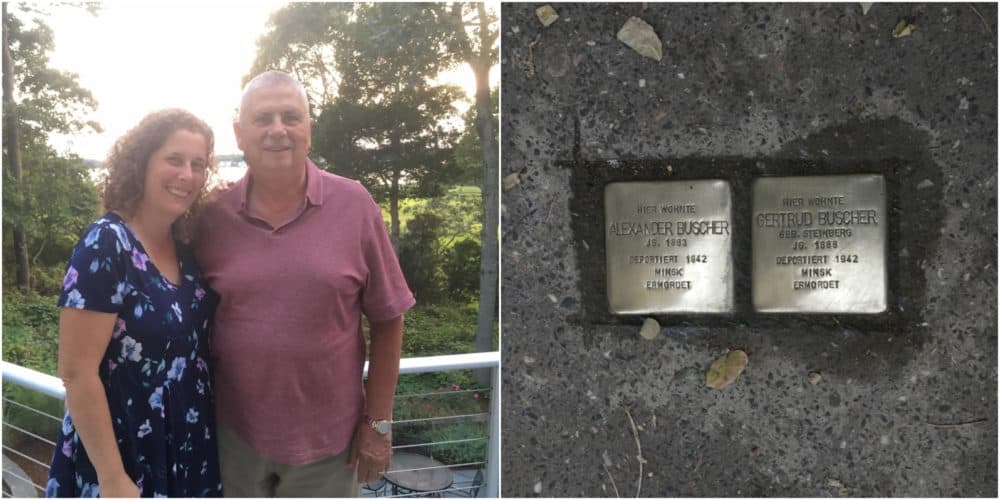Advertisement
Commentary
My family’s Holocaust story and the detail I can’t remember

No matter how many times I look it up, I can’t retain the name of the labor camp in Serbia where my grandfather, Alexander Brill, was imprisoned before his murder. May his memory be a blessing.
I can remember the address where my father lived with his parents in Dorcol, Belgrade’s Jewish neighborhood: Solunska 8. My father remembers peering out the window during the early days of the German occupation, watching soldiers with swastikas marching down his street. His mother warned him not to, it was a naughty thing to do.
Sometimes forgetting can be protective and so my father doesn’t remember his own father, though he can recall a time when his family was still intact. At first, my grandfather slaved for the Nazis during the day. In the spring and summer of 1941, he worked on a crew with other Jewish men, who were his neighbors, repairing sewer lines destroyed by vicious Nazi bombing. Sometime around the time my dad turned 3 in late August, he remembers his pregnant mother’s screams the night his father didn’t come home.
He was being held, they’d learn, in that labor camp.
I can remember the name of the town where my great-grandmother Regina lived, before she was a teenage bride in an arranged marriage: Sabac. Regina was Alexander’s mother, and she died before the war began. She’s buried in Belgrade's Sephardic cemetery; though the town’s Sephardic synagogue still stands, Jews no longer live there.

Today, Sabac is famous as the site where boatloads of Jews fleeing Austria were stranded and murdered by Nazis. But when we toured Sabac’s history museum, there was no mention of the Jewish community Regina came from, or how Nazis murdered them and the Austrian Jews. I don’t know why. Maybe local historians chose to forget.
I can remember the name of Belgrade’s airport where my father, my daughters and I landed on our trips to meet family and investigate our history: Nikola Tesla. He was perhaps Serbia’s most famous son, an inventor and futurist, and an émigré like my father.
But I can never remember the name of that camp. You don’t know it either. The Holocaust in Serbia is so little discussed, even most Holocaust experts haven’t learned its name. As a child, I knew my grandfather was a victim of the Holocaust, but also thought somehow that the Holocaust had not really come to Yugoslavia, because nobody talked about it. More Jews died in the Holocaust outside of camps than in them, but history has trained its lens on trains and large camps in Poland.
Advertisement
Sometimes forgetting can be protective and so my father doesn’t remember his own father, though he can recall a time when his family was still intact.
On a hot day in June 2017, I visited the camp where my grandfather was held with my dad and daughter. Our guide parked his two-door Toyota Yaris at the curb of a busy street. We were exhausted from the travel and my father’s legs were swollen from a new medication. I was wedged in the tiny backseat, next to my daughter. We didn’t get out of the car. Still, we could see the whole, ugly camp. A few low, run-down buildings crumbling into an overgrown yard. No one was there.
The camp was unmarked the day we visited. Our guide told us Belgrade’s small Jewish community had raised the money for a commemorative sign, but someone had stolen it, probably to melt it down for scrap metal, he said.
While my grandfather was imprisoned there, my grandmother brought him food to keep him from starving. One day, she arrived to find open gates and an empty camp. She held out hope the rumors the men were moved elsewhere to work were true. My grandmother never knew that her husband was executed by firing squad and buried in a mass grave at another grim spot in the capital city. I’m reminded that Nazis murdered 100 civilians for every soldier killed by Serbian partisans.
My grandmother survived the war, along with my father and his younger sister, who was born after Alexander disappeared. In 1948, she turned her back on Europe and took her children to Israel. She believed she might meet my grandfather there. Of course, that never happened. It's only decades later, through historical research, that I formed a clearer view of what happened than Belgrade's residents had during the fog of war.
It's only decades later, through historical research, that I formed a clearer view of what happened than Belgrade's residents had during the fog of war.
#NeverForget is the hashtag-sized lesson from my Hebrew school and International Holocaust Remembrance Day. Yet over and over, I do forget. Not the story itself — the bones of it were seared into my psyche as a small child, listening to my father recount his childhood memories. In those stories, the little girl I was, could meet the boy he had been.
Dorcol, my father’s old neighborhood, still has a synagogue and a Jewish community center. But with 90% of Belgrade’s Jews murdered in the Holocaust and half the survivors, immigrating to Israel in the late 1940s, it is now mostly a Jewish neighborhood without Jews.
I’ve visited twice, in 2017 and 2018. My father’s childhood home at Solunska 8 was gone, replaced with a larger, modern residence. The passersby on the street were too young to remember the War; I wondered what if any memories their parents and grandparents had passed down. After all, forgetting can be more comfortable than remembering.

I’m working on placing physical reminders on the street, outside my grandfather, Alexander’s, final voluntary residence. For five years, I have been trying to get a Stolpersteine installed for my family. (A Stolpersteine is a “concrete cube bearing a brass plate inscribed with the name and life dates of victims of Nazi extermination or persecution.”) Ours would join 70,000 others, in the world’s largest decentralized memorial. In 2021 the first stones were finally placed in Serbia, but we are still awaiting permission to place them in Belgrade, the center of Serbia’s small remaining Jewish community.
I remember other details about my family I’ve extracted through rigorous research, typing one phrase at a time into Google Translate. Each document squeezed for all the information it will yield, like a lemon clenched tight in my fist.
Topovske Supe is the last place my grandfather lived, I remind myself again.
